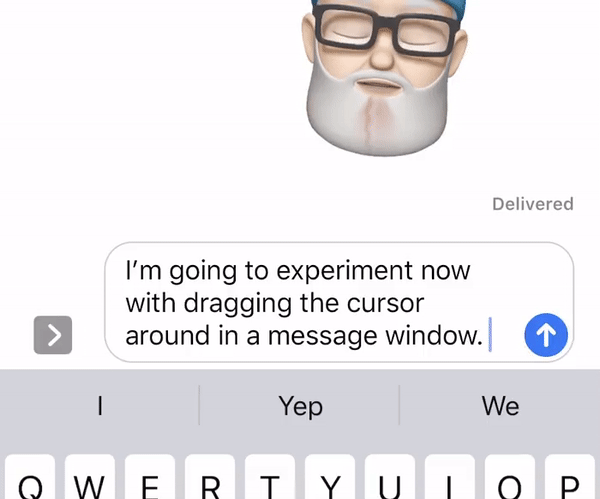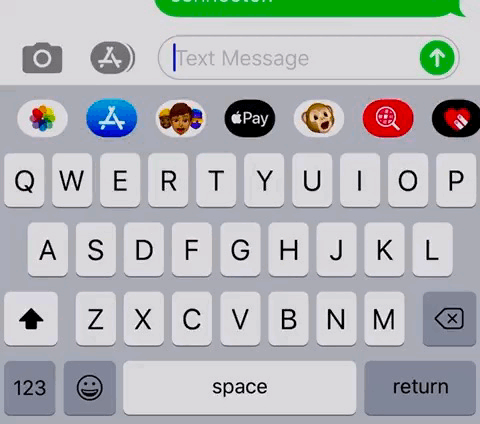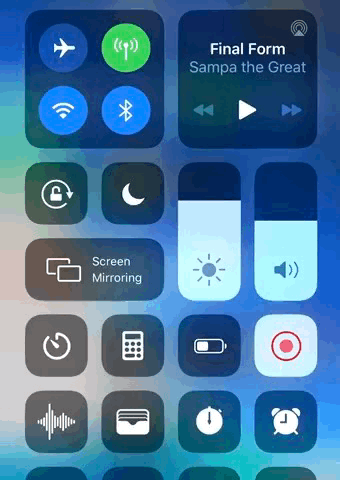We come to you!
949-204-9923
21 hidden iOS 13 features you'll want to try. The stuff most need to know to not hate the new update!

Apple unveils new iPhones every year, but with them comes something much more exciting: a new version of Cupertino's mobile operating system that powers its new devices and adds features to older iOS devices; iOS 13 works on all iPhones back to the 6s and SE.
If you've got a 6 or a 5s, sorry, you're going to have iOS 12.4.1 forever, but hey, that OS had some nice new features in its day, too.
There are lots of cool new things in iOS 13, many announced by Apple at its Worldwide Developer Conference. That includes dark mode (finally), the ability to sign in with Apple using anonymized email addresses, enhanced video editing, audio sharing on AirPods, and revamped apps and abilities for Reminders, Apple Maps, Mail, Memoji, and Siri Shortcuts.
But what about the new stuff in iOS 13 that Apple has barely talked? We've uncovered several tricks all iOS power-users will want to know.
Send Unknown Callers Directly to Voicemail

If you never, ever want to take a call from anyone who isn't in your contacts list—especially the army of robocallers that won't leave any of us alone—this is a brute-force option you'll adore.
Go to Settings > Phone and turn on Silence Unknown Callers. You'll see the warning below it that "Calls from unknown numbers will be silenced, sent to voicemail, and displayed on the Recents list." You'll only hear a ring now if the caller is in your contacts, or was a recent outgoing call, or pops up in your Siri Suggestions (like if Siri saw the number in your email).
It's a shame that robocallers even get to go to your voicemail, to be honest, but this is a good way to ignore a lot of incoming nonsense. If you've got to keep your line open to unknown callers, you should really be using a secondary number via a second SIM card or VoIP burner account.
Let Special People Through the DND Wall

Do Not Disturb is a great way to temporarily silence distracting notifications, but iOS makes it easy to allow certain groups of people to contact you no matter what. For example, in Settings > Do Not Disturb > Phone, you can Allow Calls from your Favorites or a group preset from your contacts.
But if there's an individual who isn't in a group and you want to give them complete access to you, do it: Find their listing in Contacts and click Edit at the top right. On the edit page for that person, click either their Ringtone or Text Tone entry. Up top, you'll find Emergency Bypass, which "allows sounds and vibrations from the person even when Do Not Disturb is on." Pick a nice quiet ringtone if you do this—you're giving that contact a lot of leeway to call you even in the dead of night.
Multitask With Apple CarPlay

If you're using Apple CarPlay, iOS 13 adds a new look to the dashboard interface, including dark mode, so your in-car display mimics the settings you selected in Settings > Display & Brightness > Appearance.
The dash can also now show info from more than one app. It'll default to showing your location on Apple Maps (even if you prefer Waze or Google Maps for navigation), with a button to instantly turn on GPS directions to get home, buttons for appropriate devices like a smart home garage door opener, and a smaller tile for stopping/starting audio.
That means no more switching apps to stop music while you navigate. Plus, you can see album art thumbnails with music from supported music-streaming services, including Apple Music, Spotify, Pandora, Amazon Music, even Audible.
The interfaces for phone and messages are also updated. And you can view your day's appointments (and only that day's appointments) in the Calendar app. Best of all: if someone else uses your phone while it's connected to CarPlay, the app they launch no longer takes over the dashboard. So kids fighting for music control on your phone doesn't have to interrupt navigation anymore.
Change Settings Per Webpage

It used to be that with Safari, you changed features like font size and it applied to every site you visited in that browser. Now, settings are per-website, so you can have big type on one site, and smaller type on another.
You can also set Safari to always show the desktop version of a particular site, rather than the optimized-for-mobile page. Or set some pages to override your installed ad-blocker (like PCMag, perhaps) or automatically get fed through the Safari's Reader function (pictured), which strips out the extraneous stuff on supported sites.
Don't Charge to 100 Percent Until Dawn

You're not going to overload your iPhone battery by charging it all night as you sleep, but it doesn't take long for it to get to 100 percent. And there's no reason for the phone to trickle-charge all night after that. Apple's solution: go to Settings > Battery > Battery Health and turn on Optimized Battery Charging. It learns how you charge and will set up a routine of charging your phone only to 80 percent until the time right before it knows you'll wake, at which point it'll up it to 100.
Drag Up the Volume
In the past, using the up or down volume control buttons on the left side of an iPhone showed the volume level overlay in the middle if the screen, which was very annoying when watching video. With iOS 13, you get a cool slider on the left, as if appended directly to the volume up/down buttons. Better yet, when it appears, it starts out thick, so you can put your finger on it to drag up and down to the volume level you desire.
Use 3 Fingers to Undo

I like to think no one uses the "shake to undo" option on an iPhone, because it could theoretically undo so much. (You can and should turn it off in Settings > Accessibility > Touch > Shake to Undo.) Now iOS 13 has a better way: Double tap three fingers to undo. You may also triple finger swipe left for the same effect, then triple finger to the right to redo it.
Gestures Improve Editing
You can also use three-finger gestures for cutting, copying, and pasting of text. First select some text. Then:
-
Pinch three fingers to copy.
-
Pinch three fingers twice to cut.
Once you do that, put the cursor where you want the new text and:
-
Spread three fingers (like you're dropping something) to paste.
If that all sounds too hard, do a single three-finger tap on the screen any time you have text selected (or copied); you'll get a menu up top to quickly cut/copy/paste as appropriate.
It's easier than ever to select text. Double tap with one finger on a word to highlight it, as always, but keep tapping. You'll next highlight the whole sentence, then on the next tap, the whole paragraph.
Drag the Cursor All Around

There have always been ways to move the cursor around in iOS to start typing in a new spot. The best used to be holding down the space bar on the virtual keyboard until it became a sort of virtual trackpad. iOS 13 still supports that, but does it one better: simply touch the cursor and drag it wherever you like.
You can also tap in a word on screen to drop the cursor right in the middle of the letters, something that was impossible in previous versions of iOS.
Swipe-Type on Apple's Keyboard

Not that you need this, as it's available on almost every other third-party iPhone keyboard, but if you only use Apple's built-in keyboard, it now supports what's called QuickPath, which is a fancy name for swipe-based typing. Never lift a finger again to scrawl out a message. It's especially nice on an iPad (with the new iPadOS) where you can shrink the keyboard down to iPhone size and swipe around.
Little Lord Fonts-for-All

In previous versions of iOS, you could download and use custom fonts in TTF, OTF, and TTC formats within apps, but it was impossible to manage. Now there's a Fonts Manager under Settings > General > Fonts. The best way to use it is to get a font through an app that supports it (like Ulysses). Or use a font manager so the font works system-wide, but that requires a special font downloader app (like iFont, pictured) because nothing is ever easy. MorningTick has a rundown.
More Emoji Goodies

With iOS 13, you can add to your own custom Memoji face (like braces!), and there are three new Animoji you can manipulate with your face, including a cow, mouse, and octopus.
More interesting are the Memoji sticker packs. Much like the third-party Bitmoji, the stickers take your personalized face and give it an assortment of poses that show things like mind blown, thumbs up, sleeping, peace sign, swearing, hearts in the eyes, etc.—you know, all the things you do with regular emoji, but now with more you. You can also use them with the Animoji, so that octopus can give a thumbs up. Well, sort of, since it has no thumbs.
A New Way to Update Apps

If you're like me, you get antsy when your apps don't get regular updates. I tend to push my updates manually, rather than wait for the Automatic Downloads to happen (which you can set up in Settings > iTunes & App Store > Cellular Data). However, you can no longer just go into the App Store app and select Updates. That icon is gone, replaced with Arcade. Instead, click on your profile icon at the top to go into Account. Swipe down to update the page. Under Updated Recently, you'll see the option to Update All, or you can click Update on the individual apps that need it.
By the way, if you see an app in there that needs updating but you really don't want it anymore, you don't have to wait—swipe left to delete it.
A New Way to Rearrange Apps

The old way to move around apps on your screen had you long-press on an app icon until they wiggled and could be dragged around. In iOS 13, it starts the same, with the long-press, but you'll get a pop-up menu. Select "Rearrange Apps" to get to the wiggles that allow you to drag apps around and create folders by dragging apps on top of each other. (Or, wait a few seconds longer for the wiggly icon movement to commence.)
The menu also includes an option for Sharing the app (via the Share menu with all the options to send it to your friends). Depending on the app, you'll also see some other options, like start audio, start a search, read something later, create a video, take a selfie, make a post, or whatever else the app developer built in as a time-saver.
Quick Connect to Wireless

If you're tired of having to go into Settings to get on a new Wi-Fi network or connect to a Bluetooth device, here's a slightly faster way. Open the Control Center and do a long hold on the connection box displaying the icons for Bluetooth, Wi-Fi, Cellular and Airplane Mode.
The pop-up you now get offers even more things to long-press—long-press the Wi-Fi icon and you'll get an instant list of visible wireless networks. Long-press the Bluetooth icon, and it brings up your existing list of connectable devices, so you can quickly jump on. It even works to quick-change AirDrop settings, so you could turn off receiving entirely, or switch between using it with everyone or contacts only.
Send Your Profile Pic Via iMessage

In iOS 13, the Messages app lets you send fellow Apple users on iMessage a copy of your preferred profile photo. You'll get a request to do so on iMessages you send, or click the ellipsis menu at the top of Messages and select Edit Name and Photo. You can then go in and edit your name and pick an image, either from your photos or use an Animoji, including your own Memoji.
If you don't want a pic out there, leave it as your initials (which you can at least put on different colored backgrounds). When you update your photo, you'll also be asked if you want to use the photo everywhere that is Apple related—even on your Apple ID and in your Contacts listing. Set the page to always ask if you want to share it, or to only share with your contacts.
Strip Data From Photos When Sharing

This is a long overdue privacy option in the Age of Instagram. Select any number of photos you plan to share from the Photos app. Click the Share button at the bottom. Before you share, click Options at the top; you'll get the option to include location data or not. Removing the geoIP metadata makes it a lot harder to track your actual location.
Grab Looong Screenshots

The ecosystem of apps that help you stitch together multiple screenshots on mobile phones is extensive but may be ready for extinction thanks to new screengrab features in iOS 13. If you're in Safari (or Pages, Numbers, Keynote, Mail, or Apple Maps) and make a capture, on the editing screen you'll see a new feature running down the right side of the iPhone screen. It's a thumbnail of the full page, top to bottom—not just the part you saw on screen when you hit power-volume up to make the capture. Save it to the Files app as a PDF to review later.
Use Any Bluetooth Mouse

You can now use just about any Bluetooth mouse to navigate in iOS, mimicking your own fingertips. It even works with wired mice if you can connect it to the Lightning port. Turn it on in Settings > Accessibility > Touch > Assistive Touch, which you then turn on. Then scroll down to Pointer Devices > Devices > Bluetooth Devices, which is where you connect the mouse or joystick. Once you've paired the device, make sure to customize the mouse clicks so they'll best reflect how you'd use your fingers. GadgetHacks has an in-depth look at how to do it.
Siri Sounds Better
You don't have to do anything to make this happen, simply enjoy the upgrade: Siri sounds far more natural now. You can hear (and see) the difference in this video direct from June's WWDC. The reason it'll be better, especially at longer sentences, is because of Apple's neural text-to-speech (TTS) system.
Other nice feature: if you send an iMessage to someone using Siri, it'll be marked as "Sent with Siri" on the other end, so people know to (still/always) blame Siri for the wonky dictation.
Siri Loves Spotify Now (or Will)

Usually if you ask Siri for music, your iOS device defaults to looking on Apple Music, which makes sense, but doesn't make people using other music streamers happy. New updates to Siri, however, will give other services a boost when you're talking. The Verge reports that Spotify is already beta testing an app to let it play songs and playlists requested via your voice; it even works with AirPods. Look for it in the weeks to come.
Article Source: Eric Griffith / PCMag.com
